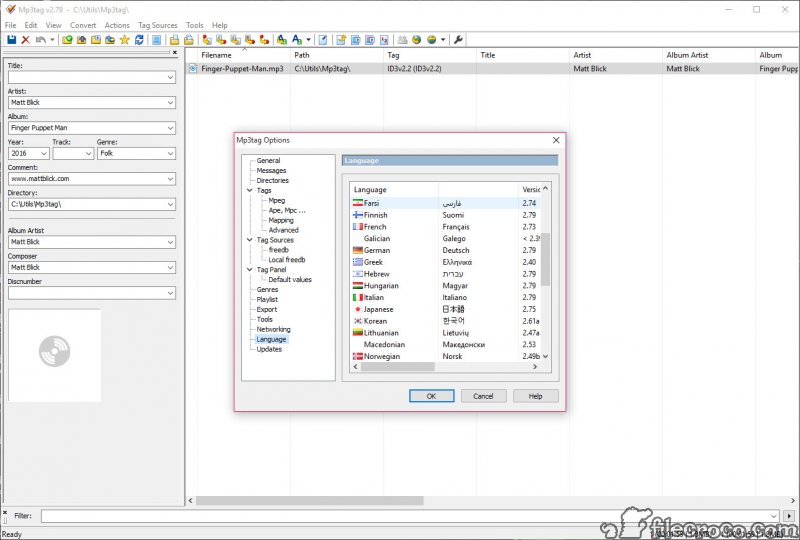
I then paste the data into a text editor. In the spreadsheet, I hit Ctrl-A to select all the data, then Ctrl-C to copy all the data. Personally, I have found it better to save the data as tab-delimited. Typically, the data elements are separated by commas with quote marks around text strings especially if the text strings contain commas. In a couple of threads there has been discussion of CSV (comma separated values) files. I can sort my spreadsheet by artist, for example, and quickly add the same genre value to all the songs of that artist. Also, a spreadsheet makes it easy to add the same data values to many records at a time. Data elements (columns) can be moved to change the order of the final output. I prefer a spreadsheet because it works like a 'flat' database file. Regardless of the source, the key is getting the final data into a format that matches the format string that must be defined in the program (see below for more on format strings).

You may have your data in a database such as Access, in a spreadsheet (Excel) as I do, in a word processing document or in a text file. Get a life.) So, the Text File -> Tag method had great potential for me. In my case, I had only the song title in the file name, but I had built a spreadsheet over the years with 20,000+ songs. However, if you have files where the order of the data elements varies in the file names, the Text File method may be better because you won't have to continually change formats for each file name difference. If you have file names that include artist, album, track number, etc., you might be better off using the File Name -> Tag method. (Auto tagging seems to work best if your files are organized by album.)Īnother factor to consider is your current file names.

You have to compare the time it takes to prepare the list versus how long it would take to enter the tags manually or try to use auto tagging. Also, you benefit more if you have a lot of files to tag rather than a few. If you have to build the data source from scratch, you may be better off entering the tags manually. Obviously, this method is useful only if you have a data file or can obtain or prepare one relatively easily. MP3Tag offers several ways to import tags, the 'Text File -> Tag' feature being one of them. This post may seem long and too detailed, but if you have several thousand "loose" files (no album organization) as I and another poster had, then these steps may save you some time.
MP3TAG PATH TO TAG HOW TO
I had to use earlier posts here and my own experimentation to determine how to make this feature work. The online Help files at this time simply do not provide enough details to use this feature. Also, I want to offer some suggestions I have found useful.
This post is intended to summarize various other threads and my experience on the subject of creating MP3 tags from text files.


 0 kommentar(er)
0 kommentar(er)
